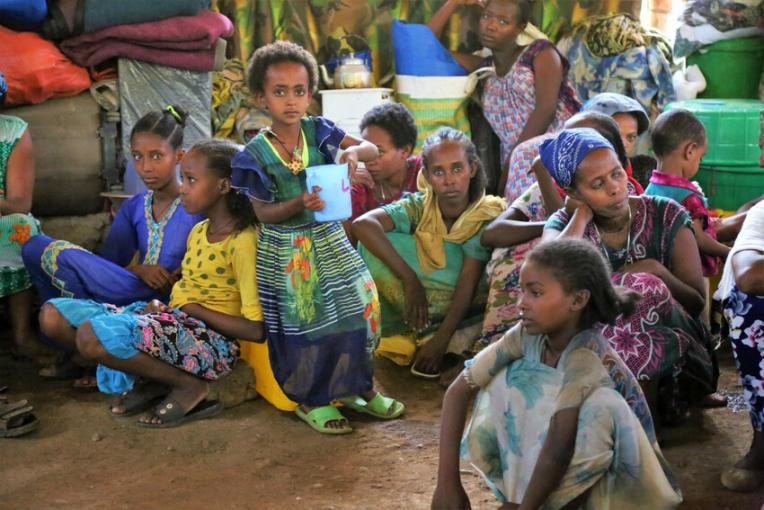15 OCTOBER 2021
Addressing the hunger crisis in northern Ethiopia should be a priority, says Dr Unni Krishnan, Global Humanitarian Director at girls’ rights organisation Plan International

I meet 12 year old Zara* in a makeshift camp in Kombolcha, a hilly town in north central Ethiopia, where every day a steady stream of people fleeing conflict arrives. Zara stands out for her pink sweater etched with a silver star and says she dreams of a better future despite the uncertain times she’s living through. That she’s unable to attend classes makes Zara sad, she says, but she has bright memories of school, her classmates and teachers. I ask Zara what she wants to be when she grows up. “A doctor,” she confides with a shy smile, but confident tone. She says she’s witnessed so much suffering and wants to take care of poor children.
The majority of people in this overcrowded camp are women and young children and a combination of factors is making their lives here miserable. Conflict, together with the COVID-19 pandemic, the climate emergency and economic turbulence has led to a steep rise in hunger in Ethiopia, as it has globally. Mothers told me how their children wake at night because they hear the sound of fighting in their dreams. In my years of work with children and young people affected by conflict and disasters around the world, I’ve learnt that children like these and Zara, face three things: firstly, hunger and disease, secondly, missed education and thirdly traumatic memories that affect their mental health.
Protection measures for children, especially girls, should be a priority in hunger zones.
According to the UN, while there is catastrophic food insecurity in Tigray and surrounding areas, the situation is also dire in other parts of Ethiopia. Between May and June 2021, about 16.8 million people were estimated to be facing high levels of acute food insecurity. Those most affected face a daily struggle to survive and the world must not stand by whilst communities fall deeper into disaster.
Every year, World Food Day is observed across the globe on October 16, with the aim of creating awareness and fighting global hunger across the world. The day also marks the anniversary of the UN’s creation of the Food and Agriculture Organization in 1945. The theme for 2021 is: “Our actions are our future, better production, better nutrition, a better environment and a better life.” In stark contrast to this title, this year’s World Food Day is marked by alarming levels of hunger worldwide
In 2021, 41 million people are at imminent risk of famine, according the UN. Among the most at risk are over half a million people facing catastrophic hunger in South Sudan, Yemen, parts of Ethiopia and Madagascar. Nigeria and Burkina Faso are also of extreme concern.
Food alone is not the solution
If hunger is the problem, food alone is not the solution. In addition to dry rations, community kitchens and therapeutic feeding, direct cash transfers to families facing urgent needs can play a critical role in stopping a food crisis on its track. School meal programmes are a lifeline in such settings. But with the COVID-19 pandemic-related lockdowns and schools converted into temporary relief camps, these programmes have been forced to close. Young girls are extremely vulnerable in such settings and are often trafficked, abused and, in some settings, can easily be targeted for recruitment by armed groups. Protection measures for children, especially girls, should be a priority in hunger zones.
Here in Kombolcha and across the world, over 811 million people will go to bed hungry tonight. Imagine if you put all the hungry people in the world in a single place and created an imaginary ‘Hunger Republic’, this fictitious country would be the third most populous on the planet. Humanitarian agencies and the UN are complementing the efforts of governments and community groups, but in most hunger hotspots, such efforts come too little or late. It’s not just food running out. Time and compassion are also fast wasting away.
Mothers are the true superheroes of this situation. Day after day they go to incredible lengths to fight hunger from the frontlines and they and community groups are often best positioned to prevent an emerging food crisis from turning into an unsurmountable hunger crisis. Mothers and community groups must have a central place in a future with no hunger.
My thoughts return to Zara and her starry dreams of being a doctor one day. In a crisis zone, children talking about the future, any future, is a signal of hope. Making such dreams come true is the collective responsibility of all humanity.
*Name changed
